How to Move a Mattress

Last updated September 7, 2023
Moving a mattress can be tough, whether you're packing and transporting your own mattress or moving in a newly delivered mattress.
This guide will help you learn how to move a mattress, using the proper techniques to protect the mattress from damage and keep yourself safe.
Difficulty:
Beginner
Duration:
2-4 hours
Table of Contents
Choosing Moving Supplies and Equipment
Before Moving a Mattress
How to Transport a Mattress
How to Move a Mattress by Yourself
How to Move the Rest of Your Bed
How to Unpack a Mattress
Choosing Moving Supplies and Equipment
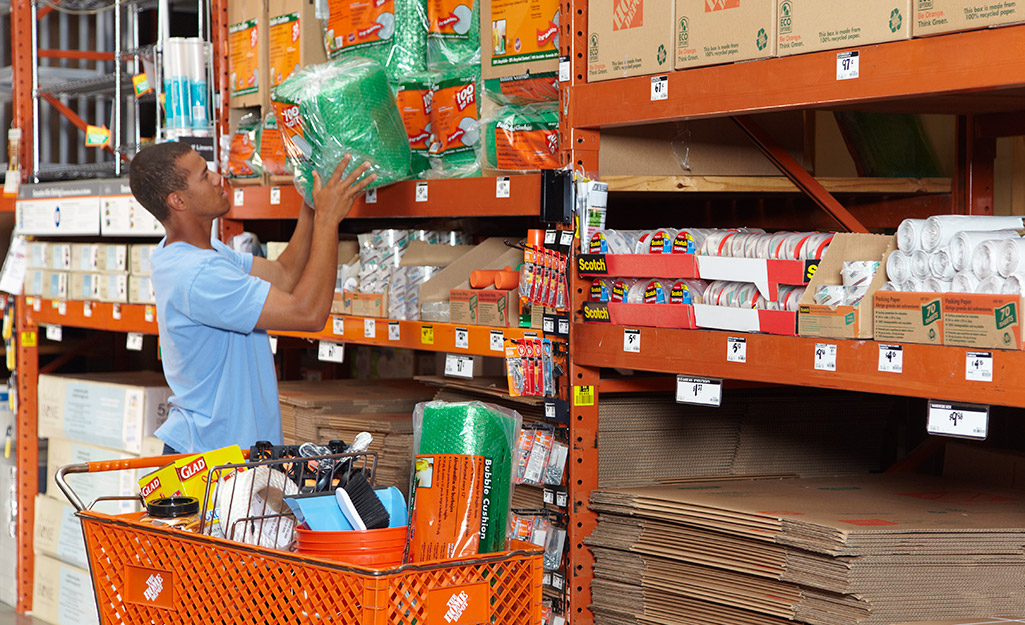
When considering how to move a mattress, your first thought should be having the supplies you'll need on hand.
Each mattress you need to move will need a protective mattress bag, correctly sized for the mattress you will move. You'll also need packing tape to reinforce the bag and provide additional protection; a roll of stretch wrap may also be utilized. A dolly or hand truck might be useful depending on how far your loading area is from your home. Several sets of ratchet or tie-down straps may be needed to secure the mattresses once you have them loaded. And don't forget to add furniture sliders and scissors to your moving supplies.
Before Moving a Mattress

When looking at how to move a mattress, it's important to consider if the mattress should be moved at all. In general, a mattress that is more than 8 years old is approaching the end of its viability. If you can afford it, you may find that the easiest way to move a mattress is to donate or discard the old mattress and have a new one delivered directly to your new home. Be aware that there may be rules in your community around discarding an old mattress, and there may be some expenses involved. Factor that into your decision.
- Strip the bed completely. Pack the bed linens into a separate box and label it so it will be one of the first things unpacked at the new destination.
- Have your helper walk the path you intend to take to move the mattress out of your home. Clear any obstructions out of way, roll up any power cords and take note of anything you'll have to get the mattress over like a high doorstep or a curb.
- Slip the mattress into the mattress bag, then seal it with tape. Fold over the edges and tape them down. Then, tape around the top, middle and bottom of the mattress in both directions to make a crisscross pattern. This should help the plastic stay on and protect the mattress surface during the move.
- If you have a box spring, you should wrap it similarly.
- With your helper, each of you should grab one end of the mattress and turn it onto its side edge.
- Lift the mattress slightly and move it out along the path you cleared. Only lift high enough to clear the floor and move it smoothly. The person in front should face forward to guide the mattress and watch for obstructions.
- If you are navigating stairs, use the wall or stair rail as additional support. The person in the back of the mattress should help support the mattress position, while the person in front guides the mattress down the stairs. Use gravity to help move the weight of the mattress down.
- Once you have the mattress near the transport vehicle, lean it against a wall or other flat, stable vertical surface, then go back and repeat the path with the box spring, if needed.
How to Transport a Mattress
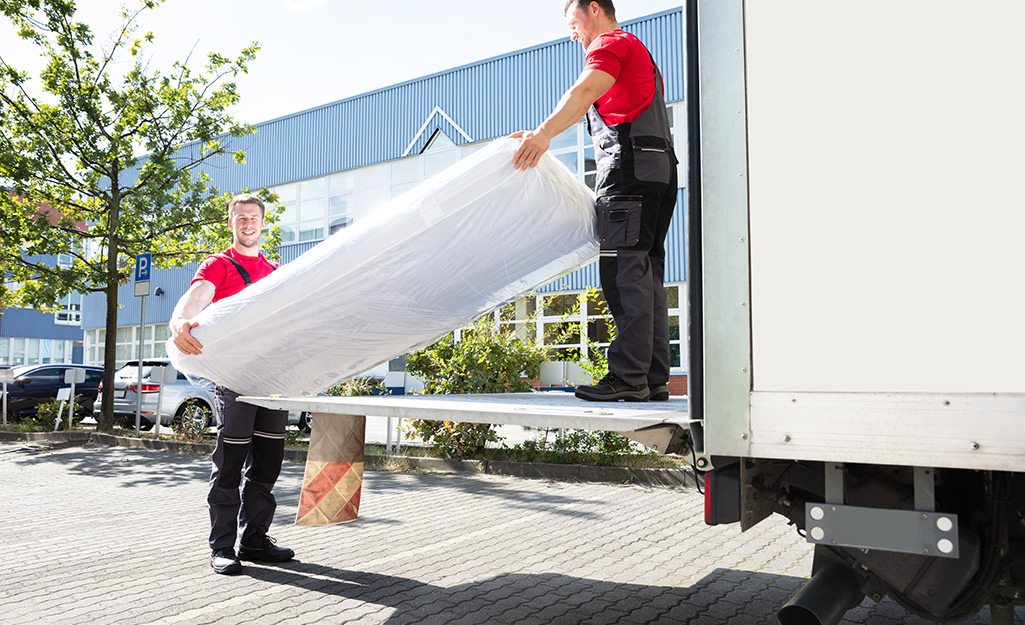
Most larger mattresses, particularly coil and spring types, are best transported on their side edge. In a truck or van, load the mattress so that it rests along the side wall of the vehicle, then strap it down. Alternatively, you can slide the mattress between two pieces of taller furniture, such as a bookcase or armoire. Check the user manual or warranty for information on how your particular memory foam mattress should be moved or stored.
Some movers may be considering moving a mattress with a car. While you may occasionally see a mattress strapped to the roof of a car rolling along city streets or the highway, experts agree that one should not use a car for moving a mattress. Primarily this is a safety issue, as the mattress is highly likely to slip off or be blown off the car and into traffic, causing accidents. Moving a mattress in this way also makes the mattress more susceptible to damage; the inner coils may suddenly bend or break internally or the surface material could be scratched or torn. Not to mention worry over the mattress's security could lead to distracted driving.
To ensure the safest possible move, either invest in a moving truck rental or check to see if a friend or loved one has a pickup truck, van or large SUV that you can borrow. Ideally, they will offer to help with the move along with the loan of the vehicle.
If you are moving over a long distance, consider having your mattress shipped, especially if you own a queen mattress or a king mattress. Many companies will offer you a price quote online based on the dimensions of your mattress and where you need it to go. Depending on the price and your circumstances it may be a better value than self-moving.
How to Move a Mattress by Yourself
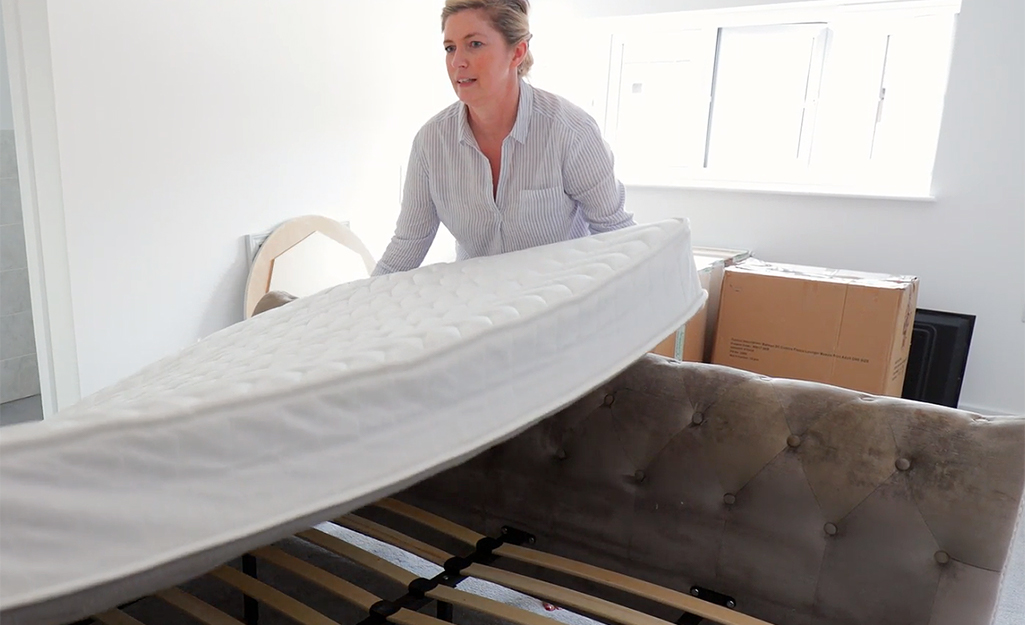
- Protect the mattress with a heavy-duty mattress cover and tape it down. This will be even more important as you are more likely to have to drag the mattress over some distances if you are moving it alone. Consider double-bagging the mattress.
- If you are moving a memory foam mattress over a very short distance, try folding the mattress top to bottom. This only works if the mattress is less than 11 inches thick. Strap it down into the folded shape with ratchet straps. Make sure the side you sleep on is inside the fold, and do not allow the mattress to remain folded for more than an hour or two in total. Check the user manual or warranty for information on how your particular memory foam mattress should be moved or stored. Do not attempt this with a coil or innerspring mattress; it might void the warranty or damage it.
- Reinforce a floppy spring or coil mattress with cardboard in the front and back to stiffen it up. Use straps to secure the cardboard. This will give you a more solid package to carry and provide you with a little handhold to grip.
- Turn the mattress on its side and drag the mattress wherever possible – indoors across carpeting or rugs, outdoors across unbroken grass.
- On stairs, turn the mattress on its side, align it next to a wall or stair rail.
Get above the mattress to guide the slide and allow gravity to help move it downstairs. - Bend knees and hips and lift from your core when you need to lift the mattress, such as over curbs or into the moving truck or van.
- Keep the mattress close to your body. Be sure that you are stable before you take a step with the weight. Don’t lift above shoulder height.
- Take breaks along the moving path if you need to. Set the mattress against a wall to provide support while you rest.
- When loading on to the truck, you may be able to slide the mattress up a loading ramp. If you have no ramp, try to lift one end of the mattress into the truck bed, and push the mattress from the back to load it the rest of the way.
How to Move the Rest of Your Bed
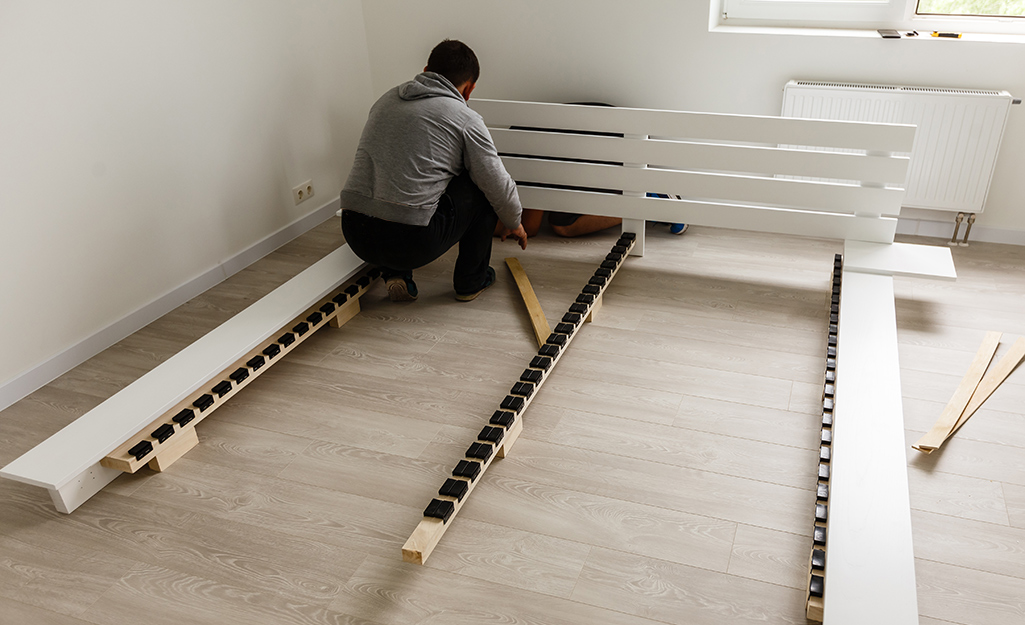
- Unscrew the headboard and footboard of the bed. Keep track of which screws and bolts go where. Use a permanent marker to mark each fastener and corresponding hole with a number.
- As you remove each fastener, reattach its washer and nut to keep each set together.
- Gather all the fasteners used to attach the headboard into one plastic zip bag and label it accordingly. In a separate bag, do the same for the footboard fasteners. Seal the bags, then tape them to the headboard or footboard. Alternatively, you can pack it into the box with the bed linens you’ll unpack at the new home.
- If the bed rests on a bed frame, loosen the screws of the cross braces and collapse the frame smaller to make it easier to carry.
- If your bed instead rests on a slat base, you’ll need to dismantle the slats from the rails. Keep track of which slat goes where by numbering the slat and its rail position, as above.
- If the slat system is pre-joined, you may be able to simply remove it from the frame and roll it up.
- Wrap the bed pieces individually to protect the surfaces from scratches and other damage. If they are made of metal, use bubble wrap. If the pieces are wood, wrap them in moving blankets. If you need extra cushioning, use bubble wrap as well, but only on the outside of the blanket wrapping.
- Load the bed parts into your moving vehicles so that they remain upright and won’t be crushed by shifting loads. If possible, place them alongside the mattress so that all the parts will be removed at roughly the same time and can be reassembled at once.
How to Unpack a Mattress
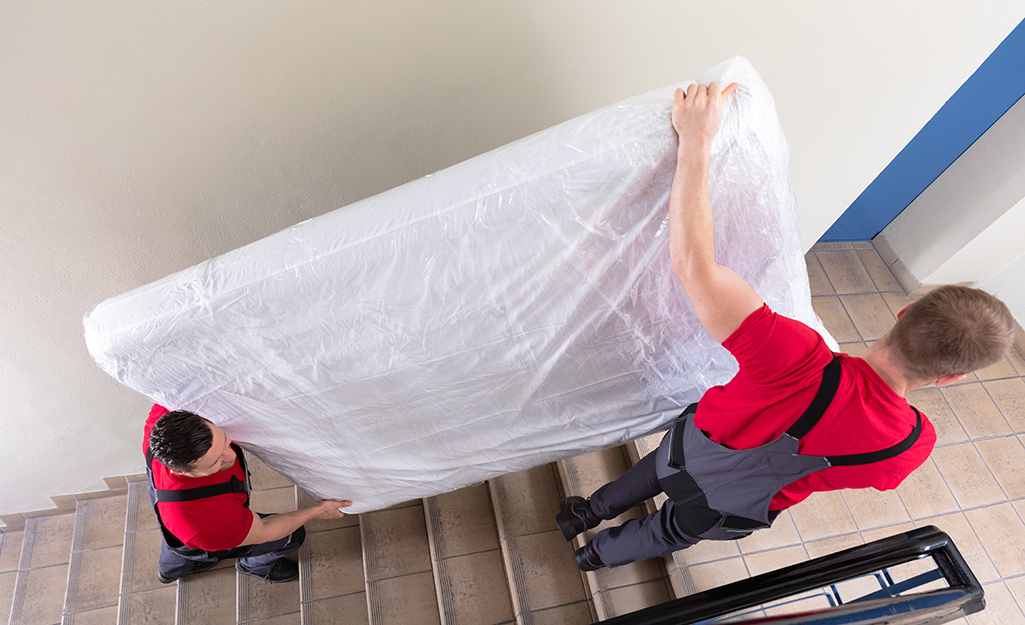
The mattress and bed pieces should be among the first things you remove from the truck and set up in the new space.
- Remove the mattress from the truck and remove all wrapping and tape.
- Air out the mattress, either by letting it sit outside in direct sunlight, or bring it inside and leave it near an open window.
- Inspect the mattress carefully to make sure you don't see any pests.
- Sprinkle baking soda over the surface and let it sit for about two hours, then vacuum it up.
- Apply a light mist of spray disinfectant to the mattress surface, then wipe it down.
- Allow the mattress to dry completely while you set up the bed frame, headboard and footboard.
- Place the mattress back on the bed,
then make the bed up with the linens.
How to Move a Memory Foam Mattress
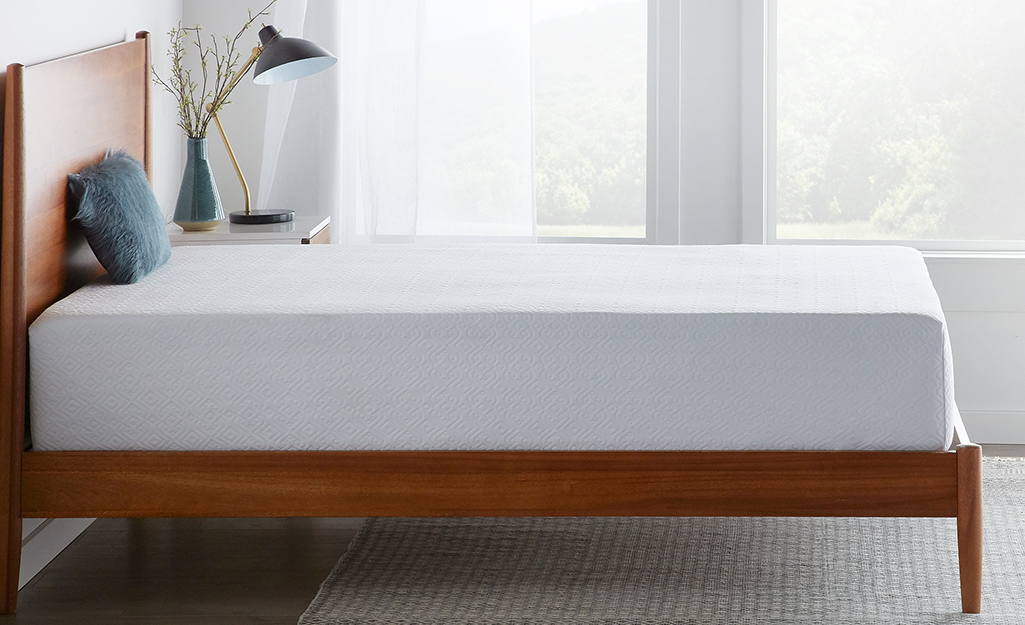
Most memory foam mattresses should be transported flat. Use a light, breathable mattress bag, or use cloth sheets to wrap the mattress. Heavy plastic can trap moisture which could damage a foam mattress, especially if the move will take longer than one day. Load the mattress into the truck, and keep it flat. Do not allow other items to rest on top of the mattress. If possible, load the mattress after most of the other large pieces have been loaded, and secure it on top of other items on the truck where it could lay reasonably flat; for example, on top of a table or supported by the tops of a few rows of boxes.
How to Store a Mattress

- Strip the mattress and give it a thorough cleaning. Consider using a steamer, but let it dry completely afterward.
- Wrap the mattress in a breathable plastic cover, and use packing tape to secure the top and bottom edges and along the side seams. If you intend to store the mattress for an extended period, be sure to find a cover that is both mold- and water-resistant.
- Move the mattress to the storage unit, and store it so that it lays flat. This will help the mattress keep its shape and integrity. If you must store the mattress on its side, you will need to rotate it every couple of months. However, long term storage on its side will wear the mattress out more quickly.
- Do not place anything on top of the mattress while it is in storage.
- If you store the mattress in a traditional storage unit, place a portable dehumidifier inside to keep the humidity low. A damp environment may cause the mattress to become moldy. For the best long-term storage, try to secure space in a climate-controlled facility.
General Mattress Moving Tips
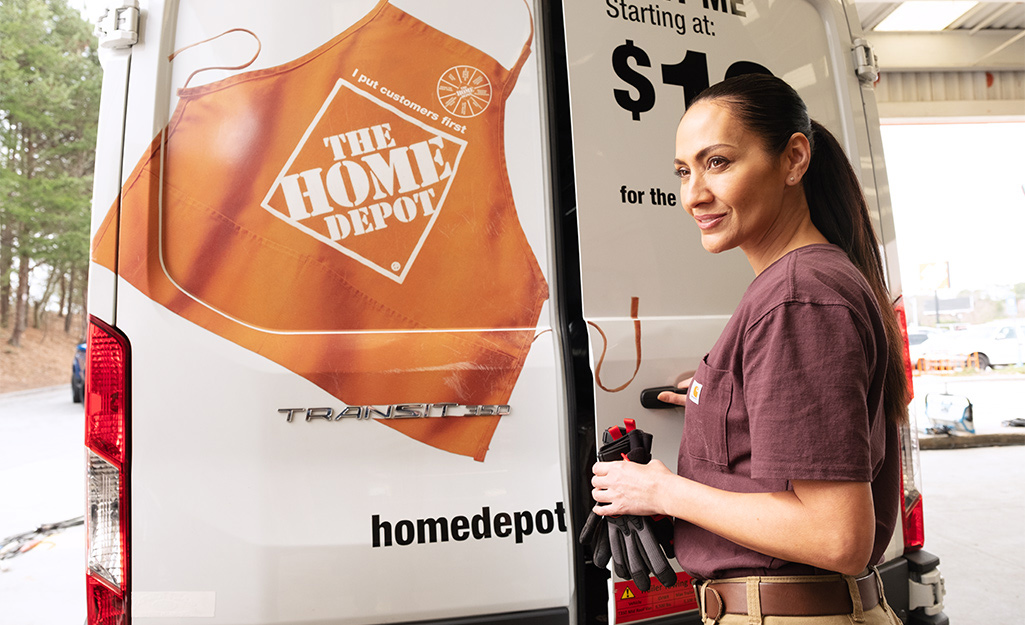
- Don't skimp on wrapping your mattress before trying to move it. Inspect it periodically as you move and quickly patch any rips or tears that develop along the way with packing tape, especially before you get the mattress outside.
- Keep an eye on the weather. Don't allow the mattress to be caught in the rain; drying a drenched mattress could take up to a week, and that is a long time to have to bunk on a couch or floor while you wait.
- A mattress moving box is expensive, but it could be a good investment, and it can save you some time in wrapping and packing.
- When renting a moving truck, inspect the inside before you drive it off the lot. Check the interior and look into the corners to be sure that it is clean and you don't see any evidence of pests.
- If you have a specialty mattress, consult the manufacturer's website for tips on how to move your particular model.
Once you nail down the right moving supplies and a little help, you'll find that moving a mattress is a matter of preparation, proper wrapping and careful moving and storage practices. When all of that comes together, the result is a good night's sleep in your new home. Get all the tools you need to move your mattresses and everything else without the upfront investment. The Home Depot offers moving and lifting equipment rentals.



























